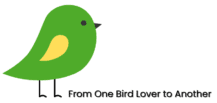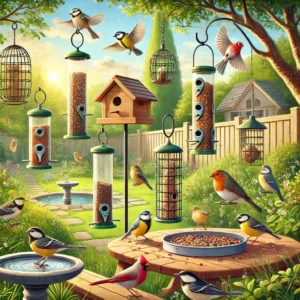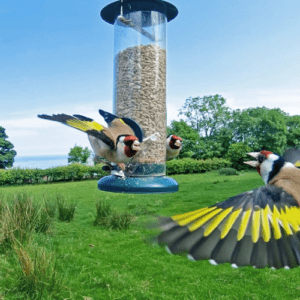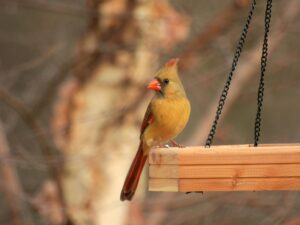Backyard birds can add charm and vibrancy to your open area. You don’t even realize how many types of bird species visit your backyard within a year. Learning about the most common species of backyard birds will add to your excitement about watching birds and building a friendly habitat for these flying creatures.
Backyard bird watching is a fun and easy activity to do. You can reach out your window and connect with nature. You can learn about the various species around you and find ways to entice them into your yard.
Common Bird Species in Detail
Backyard birds are just hugely varied in size, color, and behavior, but many exhibit a few characteristics that are also standard among regular visitors to feeders and gardens. The following species are some of the common ones shared across North America:
American Robin
With their red-orange breast, these birds can often hop on lawns looking for worms and insects. According to the North American Breeding Bird Survey, an estimated 370 million of these birds exist – North America’s most abundant land bird. Curious how birds locate your feeders? Learn more about how birds find food sources.
Size: They usually measure between 9 and 11 inches long and have a wingspan ranging from 12 to 16 inches.
Diet: Robins mainly eat insects, earthworms, and fruits. They Focus on hunting for worms and caterpillars in the warmer seasons and switch to berries and fruits during the fall and winter months.
Interesting facts: American Robins are famous for their cheerful early morning melodies that greet the dawn sky with joyous tunes. A delightful start to any day! Additionally intriguing is their feeding ritual where they tilt their heads with an air of curiosity, as if they’re listening for worms, but they use their sharp vision to detect subtle movements in the soil.
How to attract? To entice American Robins to your backyard during the winter months when food is limited elsewhere offer mealworms or fruit. Consider planting berry-producing shrubs like serviceberry or hawthorn to attract them naturally. Also, incorporating a shallow birdbath for drinking and bathing can also help in attracting these birds to your yard.
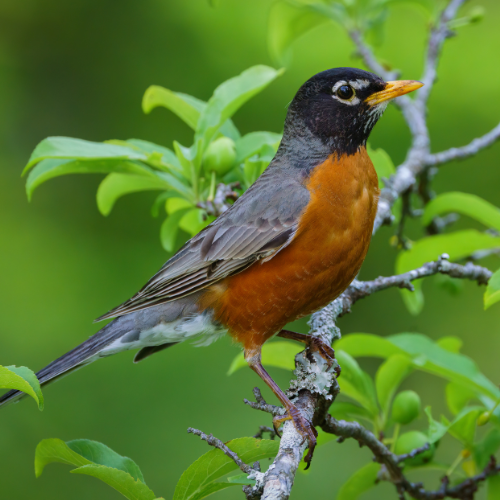
Northern Cardinal
The Northern Cardinal is a year-round resident in much of the United States, with striking red plumage and a distinctive crest. Both males and females are frequent visitors to feeders, especially those offering sunflower seeds. The cardinals rank within the top ten of the most reported birds on counts submitted through the backyard during the annual continent bird-watching events, gracing over 30 percent of checklists.
Size: They typically measure between 8 to 9 inches, in length and have a wingspan ranging from 10 to 12 inches.
Diet: Cardinals mostly consume insects, grains, berries, and fruits. They enjoy the most sunflower seeds, safflower seeds, and berries.
Interesting facts: Did you know that male Northern Cardinals stand out with their red feathers while the females sport a subtle brownish hue with a touch of red? What’s fascinating is that both male and female Cardinals are famous for their melodic songs. A unique trait compared to some other bird species where only the males showcase their vocal talents.
How to attract? To entice Northern Cardinals to your yard fill feeders with their favorite seeds like black oil sunflower and safflower. Plant native shrubs such as dogwood or serviceberry for spots, in dense foliage and add a birdbath for a refreshing sip to make your outdoor space welcoming for them to visit.
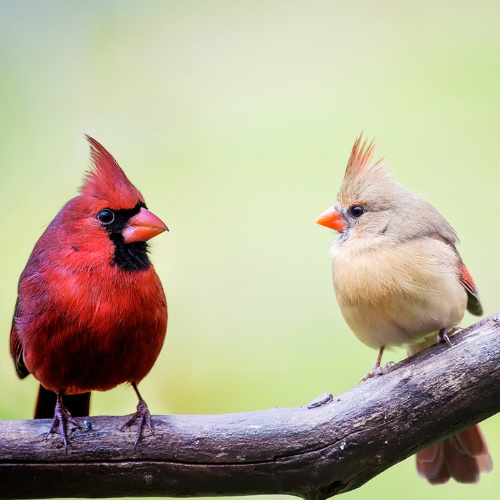
Chickadee
Chickadee, small and non-threatening, is one of the most familiar backyard birds, mainly because of its black cap and bib, contrasting white cheeks, white undersides, gray back, wings, and tail. Its distinctive call sounds like “chick-a-dee-dee-dee”. They can often be seen in feeders, especially for sunflower seeds and suet. According to Project FeederWatch, the Black-capped Chickadee are reported in nearly 60% of all participating backyards in the northern U.S. and Canada.
Size: Capped Chickadees are quite small birds usually ranging from 4.5 to 5.5 inches long and have a wingspan of approximately 6 to 8 inches wide.
Diet: These birds mostly eat insects and plant seeds, but switch to caterpillars and spiders in the warmer seasons and rely on seeds and high-energy foods, like suet during winter months.
Interesting facts: Capped Chickadees possess an impressive memory that enables them to stash away food for later retrieval remembering thousands of hiding spots even long after burying the seeds.
How to attract? To entice Chickadees into your yard fill feeders with sunflower seeds or peanuts. Place boxes in dense tree or shrub areas for cover. Include a birdbath, as a water source to attract them.
Keep your feeder clean to attract more chickadees and other species—learn how to maintain it here.
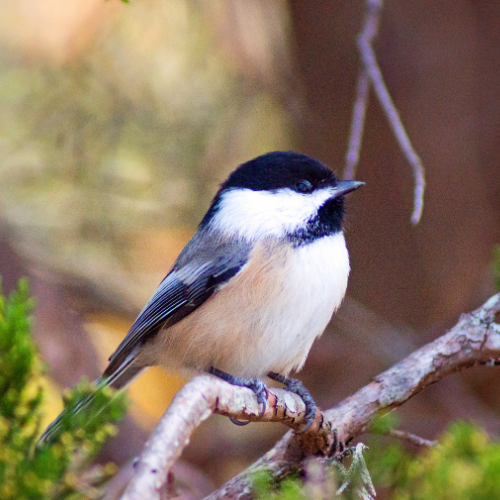
American Goldfinch
With their bright yellow feathers against the black coloration of wings and tail, this is one of the favorite birds of any backyard birdwatcher. Goldfinches prefer thistle seed feeders and are usually seen flitting about gardens containing native plants. Steady in numbers, an estimated 36 million individuals are dispersed across North America.
Size: American Goldfinches are usually about 4 to 6 inches long and have a wingspan of around 7 to 10 inches.
Diet: Goldfinches mainly eat seeds from plants such as thistle and sunflower. Also like nyjer seed and millet which are good for feeders.
Interesting facts: American Goldfinches are unique in that they undergo two molts annually to adjust their feathers according to the seasons; during summer the males exhibit yellow feathers which shift to a more olive-brown hue, in the winter.
How to attract? To entice American Goldfinches to your yard place feeders stocked with nyjer or sunflower seeds. Also, plant native flowers like coneflowers and dandelions that produce seeds. By offering shallow water sources where they can drink and bathe adding an extra touch of appeal to your garden and making it a welcoming haven, for these vibrant feathered friends.
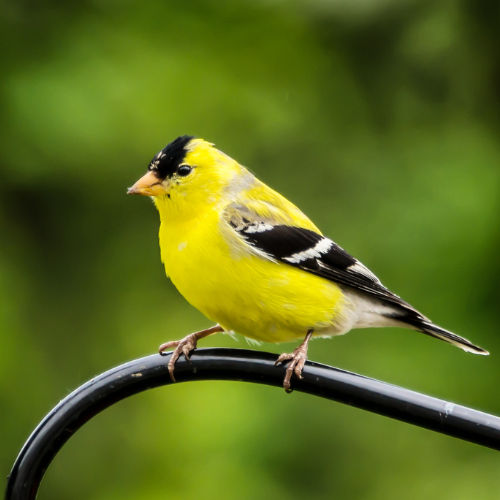
Blue Jay
The Blue Jay is a common visitor at the feeder with its bright, shining blue plumage, and a very boisterous voice. It is one of the smartest birds and has adapted well to urbanization, with a population of around 17 million concentrated in the eastern and central United States.
Size: Blue Jays are medium-sized birds of size and typically are between 9 to 12 inches in length with a wingspan ranging from 13 to 17 inches.
Diet: Blue Jays enjoy a range of foods such as seeds and nuts like acorns along with insects and fruits
Interesting facts: Did you know that Blue Jays are famous for being smart and having social interactions? They’re good at copying the sounds of hawks. Some say it’s to signal danger to birds and others think it’s to keep them away, from their food spots.
How to attract? Provide them with peanuts or sunflower seeds in your feeders. Consider using suet. Blue Jays are especially drawn to platform feeders that offer them room to sit and rest while enjoying their meal. Consider planting oak trees in your surroundings since Blue Jays are fond of acorns. Incorporate a birdbath or water source will also help draw these striking birds to your yard.
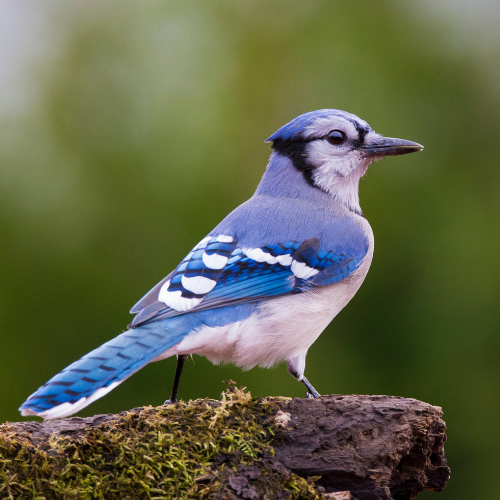
Hummingbirds
Small and colorful hummingbirds are fascinating to people who enjoy watching backyard birds due, to their speed and ability to hover effortlessly in the air. The Ruby-throated Hummingbird is found in eastern North America and is known for its shiny plumage and fast wing movements.
Size: Hummingbirds typically range from 3 to 4 inches in size with a wingspan of about 4 to 5 inches
Diet: Hummingbirds mostly rely on nectar from flowers; however they also consume tiny insects and spiders, for protein intake when the breeding season approaches.
Interesting facts: Did you know that hummingbirds can hover in flight for extended periods by flapping their wings rapidly – up to 80 times per second? They also can fly backward unlike other birds. Their hearts thump at a rate exceeding 1,200 times per minute. They need to ingest roughly half of their body weight in nectar every day just to keep up with their fast metabolism.
How to attract? To draw hummingbirds to your yard set up a variety of brightly colored nectar feeders alongside native tubular flowers such as trumpet creeper or bee balm. Ensure that the feeders are positioned in a shaded location to maintain the freshness and coolness of the nectar. Regularly clean the feeders to prevent the growth of mold or bacteria without the need for dye in the nectar. Consider including a water source like a mister or fountain, as an additional attraction for hummingbirds to frequent your outdoor space.
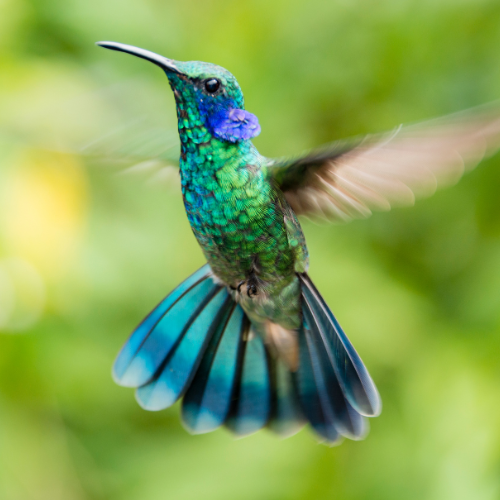
Taking Care of Our Feathered Friends
Caring for backyard birds can be quite an experience. You can attract many varieties to your backyard by taking good care of their nutrition and offering a safe place to rest. Let me point out some of the ways you can create a difference.
Attracting Common Backyard Birds
A variety of food, water, and shelter must be offered to attract different bird species:
Diverse food: Different birds have different preferences when it comes to food. For instance, chickadees and finches prefer sunflower seeds, whereas goldfinches like nyjer seed. Allowing a variety of feeders, like tube feeders that small birds can easily eat from, and platform feeders for the bigger birds, will ensure that you get a greater variety of birds visiting your backyard.
Natural Cover: Plants native shrubs and trees, which provide natural cover for shelter and nesting sites. Birds such as the American Robin and the Northern Cardinal will be much more likely to visit spots offering both food and shelter.
Sources of Water: Birds need fresh water to drink and take baths. Installing a birdbath may attract species such as the American Robin.
